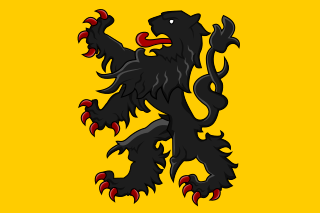
Bolesław I the Brave, less often known as Bolesław the Great, was Duke of Poland from 992 to 1025, and the first King of Poland in 1025. He was also Duke of Bohemia between 1003 and 1004 as Boleslaus IV. A member of the Piast dynasty, Bolesław was a capable monarch and a strong mediator in Central European affairs. He continued to proselytise Western Christianity among his subjects and raised Poland to the rank of a kingdom, thus becoming the first Polish ruler to hold the title of rex, Latin for king.

The Congress of Gniezno was an amicable meeting between the Polish Duke Bolesław I the Brave and Emperor Otto III, which took place at Gniezno in Poland on 11 March 1000. Scholars disagree over the details of the decisions made at the convention, especially whether the ruler of Poland was pledged the king's crown or not.

The Peace of Bautzen was a treaty concluded on 30 January 1018, between Holy Roman Emperor Henry II and Bolesław I of Poland which ended a series of Polish-German wars over the control of Lusatia and Upper Lusatia as well as Bohemia, Moravia and Slovakia.

Boleslaus II the Pious, a member of the Přemyslid dynasty, was Duke of Bohemia from 972 until his death in 999.

Boleslaus III, called the Red or the Blind, a member of the Přemyslid dynasty, was Duke of Bohemia from 999 until 1002 and briefly again during the year 1003. During his chaotic reign, Bohemia became a pawn in the long German–Polish War between King Henry II and Duke Bolesław I, "the Brave", of Poland.

Henry I, known as Henry the Strong, was the Margrave of Austria from 994 to his death in 1018. He was a member of the House of Babenberg.

Upper Lusatia is a historical region in Germany and Poland. Along with Lower Lusatia to the north, it makes up the region of Lusatia, named after the Slavic Lusici tribe. Both parts of Lusatia are home to the West Slavic minority group of the Sorbs.

The Margravate or Margraviate of Meissen was a medieval principality in the area of the modern German state of Saxony. It originally was a frontier march of the Holy Roman Empire, created out of the vast Marca Geronis in 965. Under the rule of the Wettin dynasty, the margravate finally merged with the former Duchy of Saxe-Wittenberg into the Saxon Electorate by 1423.

Eckard II was Margrave of Lusatia from 1034 and Margrave of Meissen from 1038 until his death. He was the last of his dynasty, with his death the line of Ekkeharding margraves descending from Eckard I of Meissen became extinct.

The Saxon Eastern March was a march of the Holy Roman Empire from the 10th until the 12th century. The term "eastern march" stems from the Latin term marchia Orientalis and originally could refer to either a march created on the eastern frontier of the East Frankish duchy of Saxony or another on the eastern border of the Duchy of Bavaria: the Bavarian marchia Orientalis, corresponding to later Austria.

Eckard I was Margrave of Meissen from 985 until his death. He was the first margrave of the Ekkehardinger family that ruled over Meissen until the extinction of the line in 1046.

The March or Margraviate of Lusatia was an eastern border march of the Holy Roman Empire in the lands settled by Polabian Slavs. It arose in 965 in the course of the partition of the vast Marca Geronis. Ruled by several Saxon margravial dynasties, among them the House of Wettin, the lordship was contested by the Polish kings as well as by the Ascanian margraves of Brandenburg. The remaining territory was finally incorporated into the Lands of the Bohemian Crown in 1367.

Gunzelin of Kuckenburg was Margrave of Meissen from 1002 until 1009.

Herman I was Margrave of Meissen from 1009 until his death.
Gunther was the Margrave of Merseburg from 965 until his death, upon which the march of Merseburg was united to that of Meissen.
Dietrich II was Margrave of Lusatia from 1032 to 1034, the first of the Wettin dynasty.
Oda of Meissen, also named Ode, Old High German form for Uta or Ute, was a Saxon countess and member of the Ekkehardiner dynasty. She married Piast Duke Bolesław I the Brave as his fourth and last wife.

Regelinda, also known as the "Smiling Polish woman", was a Polish princess from the Piast dynasty and Margravine of Meissen from 1009 until her death by her marriage to Herman I.

Henry II, also known as Saint Henry, Obl. S. B., was Holy Roman Emperor from 1014. He died without an heir in 1024, and was the last ruler of the Ottonian line. As Duke of Bavaria, appointed in 995, Henry became King of the Romans following the sudden death of his second cousin, Emperor Otto III in 1002, was made King of Italy in 1004, and crowned emperor by Pope Benedict VIII in 1014.

The siege of Niemcza took place during three weeks in August 1017, in the last phase of the German–Polish War (1002–18), when the forces of the Emperor Henry II besieged the town of Niemcza controlled by the Polish ruler Bolesław I the Brave. Despite the aid of Bohemian and Lutici allies, the Imperial attack was ultimately unsuccessful, according to medieval chronicler Thietmar of Merseburg due to the arrival of reinforcements which managed to break into the city and the illness among the German forces. The failure of the siege marked the end of Henry's campaign in Poland and led the emperor to agree to the Peace of Bautzen in 1018, which left the eastern March of Lusatia and the Milceni lands under Polish control.






















